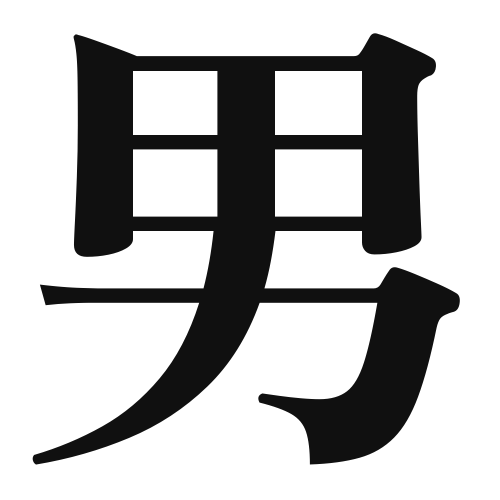1. Overview of Meaning
The kanji “男” (pronounced “otoko” in Japanese) means “man” or “male.” It is used to refer to adult males and is a fundamental character in the Japanese language.
2. Formation and Radical
The kanji “男” is a combination of two parts: the radical “田” (rice field) and the character “力” (power or strength). The character is classified as a compound character (会意文字), which combines meanings to convey the idea of a strong person associated with the land.
The radical “田” represents agriculture and rural life, while “力” signifies strength, together symbolizing a strong male figure in a traditional context.
3. Examples of Usage
Common words and phrases that include “男” are:
- 男の子 (otoko no ko) – boy
- 男らしい (otokurashii) – manly
- 男友達 (otoko tomodachi) – male friend
Example sentences in daily conversation:
- 彼は男です。 (Kare wa otoko desu.) – He is a man.
- 男の子たちは公園で遊んでいます。 (Otoko no ko-tachi wa kōen de asondeimasu.) – The boys are playing in the park.
4. Synonyms and Antonyms
Similar kanji with related meanings include:
- 男性 (dansei) – male, which is a more formal term.
- 男児 (danji) – male child, specifically referring to boys.
Antonyms include:
- 女 (onna) – woman or female.
5. Cultural and Historical Background
The kanji “男” is deeply rooted in Japanese culture, often associated with traditional roles and responsibilities of men in society. In historical contexts, men were seen as providers and protectors.
Proverbs and idiomatic expressions that include “男” are:
- 男は度胸、女は愛嬌 (Otoko wa dokyō, onna wa aikyō) – “Men have guts, women have charm,” highlighting traditional gender roles.
This reflects the cultural significance of masculinity in Japan, where the concept of “男らしさ” (manliness) is often discussed in various social contexts.
